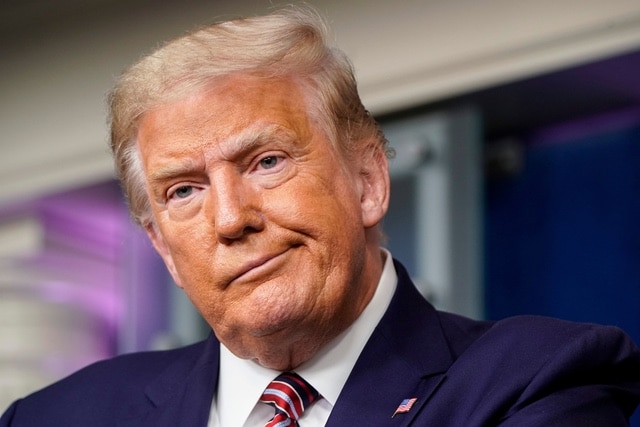Trump is back -- here’s what it means for IoT

On January 20, Donald Trump was inaugurated to the highest office in the United States of America. If his last four-year term contains hints about his next four-year term, the tech sector can expect more protectionist policies reflected in tariffs, trade wars, and production.
For connected devices in the Internet of Things, this means flow-on effects in manufacturing supply chains and potentially stricter cybersecurity oversight. Let’s explore.
Getting tough on China
Connected devices can reasonably expect to be in the political crosshairs of the incoming administration. Why? Because device numbers are booming and device functions are evermore important in the modern smart home and office.
Since Trump was last in office, global connected device numbers have doubled, with projections showing more than 40 billion devices within the next decade. And these devices increasingly control critical infrastructure from power grids to transportation systems. Given Trump’s previous focus on protecting national technology interests, and with several hawks in his incoming cabinet, stricter oversight of foreign-made devices appears likely.
China will undoubtedly be another tech target for the US. This is something we already saw in Trump’s first term with national security concerns leading to restrictions on Huawei and ZTE. As a result, some companies are already moving to prevent possible bottlenecks with Apple ready to double its iPhone production in India over the next two years if Trump follows through with his election threats of 60% to 100 percent tariffs on Chinese imports.
Plenty of cheap and decent (and sometimes not-so-decent) devices come from this part of the world. These tighter controls and expensive tariffs could therefore realign the sector globally. My advice for device users and businesses is to watch this space and keep a close eye on how pricier parts or devices evolve. Fluctuations and availability will also be heavily impacted by another consideration: chips.
The question of chip production
Microcontrollers -- the artificial brains powering connected devices – will be another defining IoT issue of Trump’s term. The pandemic’s supply chain crisis clearly showed the dangers of over-relying on foreign chip production, leading the outgoing administration to launch the CHIPS Act with more than $50 billion in incentives for domestic semiconductor manufacturing.
However, Trump’s campaign threats to reduce or eliminate these chipmaker incentives create uncertainty. Major chip manufacturers like Intel and TSMC have already broken ground on multi-billion dollar facilities thanks to this funding. Rolling back support could stall domestic manufacturing momentum just as it’s gaining steam.
For the IoT industry, which requires a stable and robust chip supply chain, this could impact everything from product development timelines to device costs. Companies may therefore need to diversify their chip sourcing strategies beyond both China and domestic suppliers, looking to friendly nations like South Korea, Japan, or India as alternatives.
Overall, there’s a tension here between Trump’s desire to encourage domestic production and his disdain for good ideas from political adversaries -- time will tell which proves stronger.
Using tariffs for good
Plenty’s been written about Trump and his newfound love for tariffs. Certainly, it will be interesting to see how this rhetoric translates into reality. However, while new tariffs could impact producer margins and raise consumer device prices, Trump could leverage them strategically in IoT.
Lax cybersecurity standards and frankly poor products are major vulnerabilities when connecting devices across the public and private sectors. Trump could protect consumers and businesses by selectively targeting tariffs at device companies with proven poor security records. The government already has this data through its Cyber Trust Mark program -- a checkmark similar to Energy Star that indicates whether devices meet cybersecurity standards. Trump administration could use this existing framework to reward security-conscious companies by eliminating their tariffs, simultaneously protecting users and incentivizing better industry practices.
Of course, he could even go one step further and create baseline security regulations for device makers like in the United Kingdom and European Union. These jurisdictions already eliminate basic weaknesses like default passwords and nonexistent patching through fines and oversight. While this type of legislation probably isn’t Trump’s style, the growing ubiquity of connected devices in modern life could make similar regulations increasingly appealing from a national security perspective.
Companies and consumers in this space face a pivotal four years ahead. Trump’s policies -- from tariffs to chipmaking incentives to potential security regulations -- could fundamentally reshape where devices are made, how they’re secured, and what they cost. Success in this new environment will require careful attention to both policy shifts and their ripple effects across the global device ecosystem.
Image credit: Naresh777 / Shutterstock
Carsten Rhod Gregersen is the CEO and founder of Nabto, a company that provides a P2P-based platform for IoT devices
